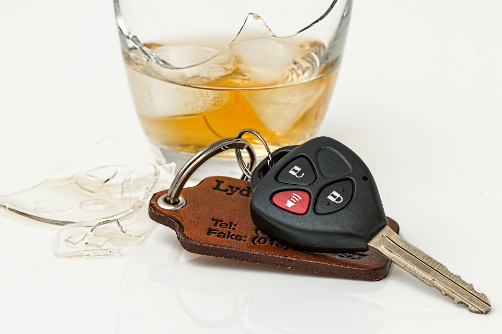States may use different terms such as “driving under the influence” (DUI) or “driving while intoxicated” (DWI), but regardless of what they call it, all states have laws regarding driving and being on a substance that alters your ability to operate a moving vehicle. In the state of California, for example, there are two types of DUIs: traditional DUI and Per Se DUI.
When you sign your driver’s license, you agree to follow all traffic laws and to be sober behind the wheel under penalty of the law. And while most people take precautions before driving, others don’t and cause serious accidents or get pulled over when they show obvious signs of intoxication. DUIs can be tried as misdemeanors, infractions or felonies, depending on whether or not anyone was injured or killed by the driver, or if any property was damaged.
Traditional DUI
Under California Vehicle Code Section 23152(a), it is unlawful for a person to drive a vehicle when they have 0.08 percent or more, by weight, of alcohol in their blood. But in this type of DUI, a person is arrested for actual impaired driving. Because this type of DUI is related to your driving abilities and not necessarily due to a high BAC level, you can still be charged with a DUI even if you could chemically pass an inebriation test. There are some telltale signs of intoxication that police officers are looking for when monitoring traffic, such as:
● Making very wide turns
● Not stopping at stop signs or traffic lights
● Erratic braking
● Drifting in and out of lanes
A driver can also be pulled over if they are exhibiting any of these signs but are under the influence of prescribed or over-the-counter medications. Many medications come with strong warnings against using them when operating a motor vehicle. Visit duidefensela.com to learn more about how these types of cases are prosecuted, and what to do if you are facing conviction and major penalties.
Per Se DUI
According to California Vehicle Code Section 23152(b), whether or not you were actually impaired while driving does not matter. If you are found to be driving with a blood alcohol content (BAC) higher than 0.08 percent, then the government considers you to be legally impaired.
You can be charged under both if you are found to be driving recklessly and to have a BAC higher than 0.08 percent.
How A DUI Affects Your Driving Privileges
The Division of Motor Vehicles and the courts want to protect people by reducing the driving rights and privileges of those who have been convicted of driving while intoxicated. Officers are tasked with enforcing these policies. For this reason, the DMV is going to be reluctant to reinstate your license before the entirety of your sentence is up. Some states have “Cinderella laws”, which allows drivers who have been convicted of a DUI to legally drive during specific 12-hour periods of the day so they can get to work and school. Each state may have other restrictions, too. For example, Senate Bill No.1046 in California took effect in January 2019 and requires that anyone found guilty of driving under the influence to temporarily install a breathalyzer in their car in order to get their driver’s licenses back.
Let us know what you think in the Comments.



Speak Your Mind